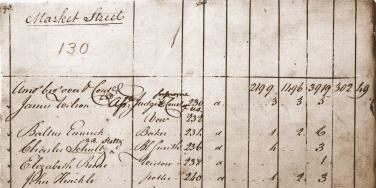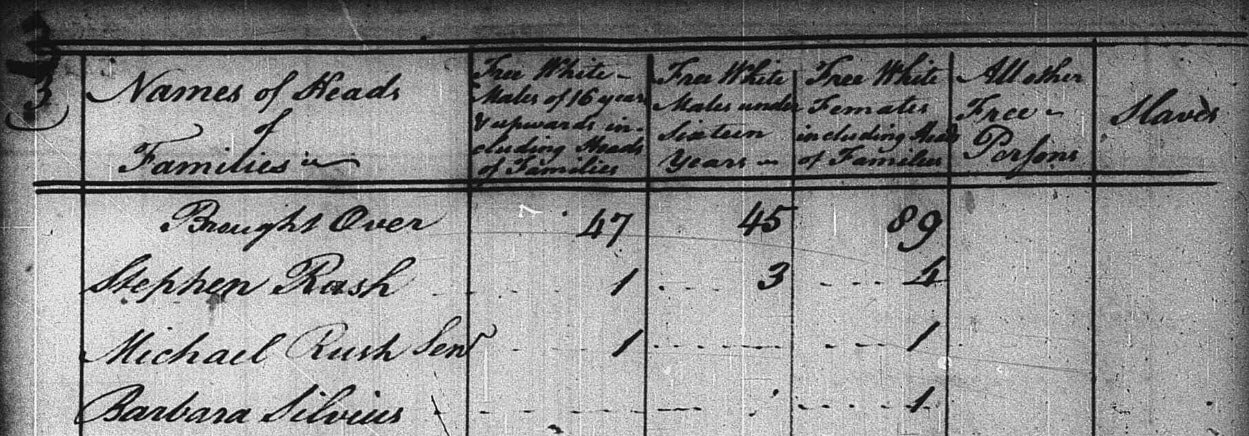Blog


Genealogy Gems Podcast Episode 224
Genealogy Gems Podcast Episode 224
In this episode we recap 2018, and explore additional ideas to help you organize your home movies. Whether you have 8MM film, VHS tapes, Mini DV tapes or DVDs, this episode has what you need to preserve and organize them.
Lisa’s Recent Travels
Swedish Genealogical Society in Edina, MN and a side trip to Winthrop, MN.

Above: Speaking at the Swedish Genealogical Society

Above: Bill (left) with his new found Larson cousin.
Oslo Norway – MyHeritage

Above: Speaking at the MyHeritage conference in Oslo, Norway

with my genealogy crew at the Viking Ship Museum in Oslo, Norway
Read Are You Part Viking? By Anna Swayne
A Visit to Sweden

Above: Lacey in Gothenburg, Sweden
Mailbox
High school teacher Lindsey called in to share an unexpected occurrence of genealogy serendipity.
Here the original Genealogy Gems Podcast episode 185 where George Ella Lyon reads her poem.
Read more about and watch the video I created for Tom Boyer of his Where I’m From Poem
MyHeritage.com is the place to make connections with relatives overseas, particularly with those who may still live in your ancestral homeland. Click here to see what MyHeritage can do for you: it’s free to get started.
Give the gift of story with Storyworth
StoryWorth gives your loved ones a reason to spend time with their favorite memories and share them with you giving you opportunities to become closer, even when you live far apart. It’s an easy and thoughtful gift even at the last minute.
Get $20 off by visiting storyworth.com/gems when you subscribe. Again $20 and you’ve got a gift that keeps on giving. Visit Storyworth.com/gems
Followup on GGP 223
I’m organizing and digitizing my Grandmother’s old home movies with Video Conversion Experts. I told my uncle about it and now he’s sending me the rest of his old home movies! Video Conversion Experts is the company that Dr. Haas used to convert his films. They did an exceptional job in post production restoration, and are known for this work in the film industry. They are the ideal company to go with if you want to invest in the highest quality of restoration. They are currently running a terrific 35% off sale now through 12/21/18.
I’m digitizing my family’s High 8 home movie tapes with Larsen Digital. The list of mediums that they can digitize is one of the most extensive I’ve seen. They are even able to digitize the unmarked audio tape that I found among my grandmother’s home movies. Kristin and her team are well known in the genealogy community and are based in Utah. They have graciously extended a 15% off to my listeners. Use the coupon code: GenGem. Discount is valid on: video tapes, movie film, audio reels, audio tapes, slides, negatives, photos & specialty film.
Your feedback on episode 223
On Instagram from Erin:
“I loved this episode Lisa! Anna’s song is so beautiful too! I learned a lot and the way you shared this story was wonderful. A favorite gem for sure.”
From Greg in New Zealand:
“I’m loving the new narrative/profile episodes and had noticed the evolving voice and style in GGP 223. You and your team are wonderful writers…David Haas’ story reminded me of my good friend Mark Holtze. An editor in Toronto, Mark has digitised all of his grandfathers’ 16mm vacation films from across Canada in the 50s, 60s and 70s. They are brilliantly presented. Mark is very talented. I think they’re worth sharing with your listeners. I don’t know Mark’s connection to this posting specifically but it’s an amazing one on his playlist.”
I couldn’t agree more! Here’s the description of the video: A number of 8mm film reels were purchased at a Flea Market in New York City for $10. They ended up being home movies taken in the late 40’s and 50’s. How they ended up at a Flea Market in Manhattan all those years later is one thing, but most importantly was getting the films reconnected with the family. …60 years later….
Thank you to our sponsor:
I’ve used RootsMagic for years and love it. You will too!
Organizing the videos you find online
After listening to episode 223, Kate was inspired to head to YouTube in search of videos that illustrate her memories. She writes:
“I’ve been trying to set up a collection of my memories on you tube. Do you have any thoughts on to put this together? Is it possible to add clips and not full videos?”
My suggestions:
YouTube: Organize with playlists
You can use Playlists to group the videos you find by topic. You could create playlists for locations, timeframes, people and so on. Sign in with your free Google account which will give you access to your YouTube “channel.” When you find a video, under the title of the video click the plus sign that says “Add to”. Select a playlist from the playlists listed in the dropdown menu. These are playlists you have already created in your account. If it’s a long list, use the search box to search for a playlist title. Or create a new Playlist by clicking “Create New Playlist” at the bottom of the menu.
Unfortunately, YouTube doesn’t give you a way to add your own notes. And you can’t create clips of videos (at least not as of this writing), but I do know that when you share a video you can mark that it start at a point in the video that you select. Which brings me to my next suggestion…
Pinterest: Organize Videos into boards on Pinterest
If you would like to have even more control over organizing the videos that you find, and you want to be able to add your own notes and memories, consider using Pinterest. In your free Pinterest account you can create as many boards as you want. Create a board for each topic (much like with the Playlists I suggested previously) and save YouTube videos to them. And of course, you can save any other online content “memories” that you find along with them if you want. The beauty of pinning is that you can add your own notes and memories, plus you can set the video to begin at any point within the video that you want. Simply click “Share” under the video in YouTube, and click to check the box for “Start at.” Next, click on the player timeline that runs across the bottom of the video on the spot where you want the video to begin playing. Finally, click the Pinterest icon in the Share area to pin it to your Pinterest board of choice.
Profile America: TV Tech
Thursday, December 13th. The important holiday business of viewing such classics as “It’s A Wonderful Life” and “A Christmas Story” on home TVs owes much to a technological advance this month 80 years ago. In December 1938, Russian-American engineer Vladimir Zworykin was awarded two patents for cathode ray tubes. One was for the iconoscope to capture video images. The other was for the kinescope, which displayed television and computer monitor images for decades until the advent of flat panel screens. Whatever the ills of TV programming, obviously the American people consider it an appliance for a wonderful life. More than 98 percent of American households own at least one set, a percentage that has held steady for years and across all age groups.
PRODUCTION CREDITS
Lisa Louise Cooke, Host and Producer,
Editor Hannah Fullerton, Audio Editor
Lacey Cooke, Service Manager
Disclosure: As an Amazon Associate, Genealogy Gems earns from qualifying purchases you make when clicking from the links we provide. It doesn’t cost you anything extra but it helps support our free blog and podcast. Thank you!

U.S. Cemetery Records & More New Online
Find your ancestors in U.S. cemetery records and more in these week’s roundup of new records available online. All resources below come from free websites and also include vital records, court records, county records, and various historical collections. If you’re researching Jewish ancestors, be sure to check out a wonderful free Jewish collections website for resources and databases.
New U.S. Records Free at FamilySearch
FamilySearch has several new U.S. records collections online now. They may be small, but your ancestor just might be lurking in these indexes!
Arizona, Gila County, Cemetery Records, 1927-1994. Browse 3,500 records in this collection of cemetery records from the Dudleyville, Ft. Grant, Mammoth, Superior, Ray, and Hayden cemeteries in Gila County, Arizona. These records may tell you the name of your ancestor, birthplace and date, death date, parents’ names, children and spouse names, and even sibling names.
Idaho, Madison County Records. There are 2,300 indexed records in this new collection, as well as 34,000 browsable images. In this collection you’ll find vital records, homesteads, patents, deeds, mining records, and Wills and probate records.
Tennessee, Jackson County Records, 1801-1974. Marriage records and records of the Chancery and Circuit Courts are available in this new collection of nearly 14,000 indexed records and 18,000 images. This collection is being published as images become available.
Florida, Index to Alien Arrivals by Airplane at Miami, 1930-1942. This unique collection has 51,000 indexed airplane manifests. The collection is set up by index cards, arranged alphabetically by surname. These records correspond with NARA publication A3382 and were filmed at the NARA facility in College Park, Maryland.
Virginia, County Marriage Records, 1771-1943. Browse almost 40,000 indexed marriage records and images in this collection. The records include registers, bonds, licenses, and returns for the following counties: Accomack, Franklin, Giles, Rockingham, and Westmoreland. The content and time period varies by county.
Jewish Records & Collections
FamilySearch also has a new collection of Virginia, Jewish Cemetery Records Index, ca. 1800-1986. Included is an index to maps 1-45 of the Jewish cemetery records compiled by Samuel and Dorothy Werth. The original maps are located at the Virginia Historical Society. These cemetery records may be able to tell you the name of deceased, their year of birth, year of death, the name of the cemetery, and the city where the cemetery is located.
Another great resource for finding Jewish ancestors is the Jewish Digital Collections website. You can explore an annotated list of more than 350 sites containing digitized collections of Jewish history, records, culture, and more. The list is divided into 22 categories, which are alphabetized into drop-down menus. You may also be interested in their Jewish Studies Guides, which have been prepared by university librarians worldwide to help students taking courses in Jewish studies. They may lead you to additional resources and materials.
More to learn about cemetery records
Cemetery research is a crucial family history skill. Tombstones are monuments to our ancestors’ lives and may have key genealogical clues engraved in the stone. Learn more about how to find them with these four steps to finding your ancestors’ burial places and the records that complement them.
 For a comprehensive guide on finding your ancestors in cemeteries, grab a copy of The Family Tree Cemetery Field Guide. This book contains detailed step-by-step instructions for using FindAGrave and BillionsGraves, plus guides for understanding tombstone epitaphs and symbol meanings. Discover tools for locating tombstones, tips for traipsing through cemeteries, an at-a-glance guide to frequently used gravestone icons, and practical strategies for on-the-ground research. Click here to order yours today!
For a comprehensive guide on finding your ancestors in cemeteries, grab a copy of The Family Tree Cemetery Field Guide. This book contains detailed step-by-step instructions for using FindAGrave and BillionsGraves, plus guides for understanding tombstone epitaphs and symbol meanings. Discover tools for locating tombstones, tips for traipsing through cemeteries, an at-a-glance guide to frequently used gravestone icons, and practical strategies for on-the-ground research. Click here to order yours today!

Lacey Cooke
Lacey has been working with Genealogy Gems since the company’s inception in 2007. Now, as the full-time manager of Genealogy Gems, she creates the free weekly newsletter, writes blogs, coordinates live events, and collaborates on new product development. No stranger to working with dead people, Lacey holds a degree in Forensic Anthropology, and is passionate about criminal justice and investigative techniques. She is the proud dog mom of Renly the corgi.
Disclosure: This article contains affiliate links and Genealogy Gems will be compensated if you make a purchase after clicking on these links (at no additional cost to you). Thank you for supporting Genealogy Gems!

5 Tips for Finding Families in the 1790 US Census
The 1790 United States census was the first census taken after the establishment of the new country, so documenting ancestors’ presence at this historic time often inspires a sense of patriotism. However, locating those census entries can pose a few challenges. Use these five tips to conduct a more successful search in the 1790 census as well as in other documents.
Thank you to the experts at Legacy Tree Genealogists for this guest post!
1. Meet handwriting challenges head-on.
Handwriting from the 1790s often looks like a foreign language to modern eyes, including to people who helped index the census. The FamilySearch Wiki includes links to several videos and articles under the title “United States Handwriting.” Use these links to become familiar with the different writing styles in early American records. If your ancestor doesn’t seem to appear in the census index, look for creative spellings by the census taker.
Also, try looking for the name by substituting letters that might have been misread by the indexer. For instance, a search for Silas Sawdy initially turned up no results, even looking for Sandy, Lawdy, and Landy. The entry for “Silas Soddy” was finally located by going through the census page by page, but the indexer had read his name as Tilus Toddy.
Image: 1790 Census, courtesy of FamilySearch.org
2. Know what is included in the 1790 U.S. Census.
The 1790 U.S. Census contains very limited information about the household members. Census entries were organized using the names of heads of households, with tick marks in different columns to indicate household members. There were only five questions asked about the individuals in each dwelling:
- The number of free white males under 16 years of age
- The number of free white males age 16 and upward
- The number of free white females
- The number of other free persons
- The number of slaves
The count could include visitors, servants, relatives, and of course, the members of the immediate family. Some children might have been working outside the home or were being cared for by others. In those instances, the children would have been enumerated in the household where they lived the day the census was taken. When the father in the family was deceased, a son would usually be listed as the head of household rather than the surviving widow, though some women were given that title. The oldest person was also not always listed as head of household, especially if elderly parents made their home with a younger family member.
3. Gather information about your ancestor’s family structure.
The 1790 census is not a stand-alone document. Learn as much as possible about your ancestor’s family and use this knowledge in conjunction with the census. Collect documentation from later censuses, town records, land dealings, wills, and local histories. When there are several possible matches in the 1790 census, focus first on those whose family structure most closely fits the target households. For example, if your ancestor had young sons in 1790 and there were several households in the area headed by men with the same name, it is easier to rule out the entries with no males under 16. Remember that the household numbers did not always reflect just the members of the family, so especially if there were more individuals in the household than expected, the entry may still be for your ancestor.
4. Locate the proper area for your search.
Use gazetteers and maps of the places your ancestors lived. Names of towns and counties, as well as their boundaries, fluctuated over time. The FamilySearch Wiki contains valuable information about the locations and dates of these changes, as do other online sources. It is vital to know that the 1790 census returns from Delaware, New Jersey, Virginia (including West Virginia), and Georgia, along with the territories of Kentucky and Tennessee were destroyed when the Capitol was burned in the War of 1812. Surviving records are from the present states of Maine (included as part of Massachusetts), New Hampshire, Vermont, New York, Pennsylvania, New York, Massachusetts, Rhode Island, Connecticut, Maryland, North and South Carolina.
5. Research all the families in the area with the target surname and related surnames.
Once the ancestral town for the family has been determined, gather census records for all those in the area with that surname, moving outward to the county level, then the state. Especially if the surname is uncommon, it may be possible to find other documents to link these families together. Pay particular attention to families who live near each other who have known surname connections. For example, if two possible matches exist for Isaac Johnson but one is enumerated on the same page as Eli Garrick and the ancestral Isaac Johnson married a Garrick, that entry is more likely to be for the ancestor.
Though locating ancestors in the 1790 U.S. Census can be a challenge, this document can provide a valuable “puzzle piece” to create a complete picture of the family.
Legacy Tree Genealogists is a full-service genealogical research firm that helps clients worldwide discover their roots and personal history through records, narratives and DNA. Visit the Legacy Tree Genealogists website for a FREE consultation!
Exclusive Offer for Genealogy Gems readers: Receive $100 off a 20-hour research project using code GGP100.

















